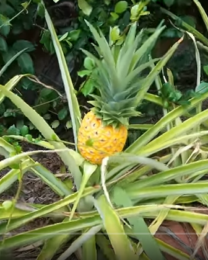
Off-grid living is a lifestyle choice that emphasizes self-sufficiency, sustainability, and a closer connection to the land. One of the most rewarding aspects of this lifestyle is growing your own food. In this article, we’ll explore how off-grid living and home food growth go hand in hand, providing you with fresh, healthy produce right from your own backyard.
The Joy of Growing Your Own Food
At the heart of off-grid living is the desire to reduce reliance on external resources and live in harmony with nature. Growing your own food is a natural extension of this ethos. Here are some compelling reasons why off-gridders choose to cultivate their own crops:
- Food Security: Off-grid living often involves remote locations, making access to grocery stores a challenge. Growing your own food ensures a constant source of nourishment.
- Self-Sufficiency: Homegrown produce reduces dependence on industrial agriculture and the global food supply chain. It empowers you to take control of your sustenance.
- Nutritional Quality: Freshly picked fruits and vegetables are at their nutritional peak. You’ll enjoy food that’s not only flavorful but also packed with essential vitamins and minerals.
- Cost Savings: Producing your own food can significantly cut grocery bills, freeing up resources for other off-grid necessities.
Getting Started with Off-Grid Food Growth
Assess Your Land
Before you start planting, assess your land. Determine your growing zone and climate, which will influence what crops thrive in your area. You may need to consider microclimates within your property, such as sunny spots for tomatoes and shaded areas for leafy greens.
Choose the Right Crops
Selecting the right crops is crucial for success. Opt for varieties that are well-suited to your region and climate. Consider growing a mix of fruits, vegetables, and herbs to diversify your diet.
Sustainable Gardening Practices
Off-grid living encourages sustainability. Embrace eco-friendly gardening practices like composting, mulching, and using rainwater harvesting systems. These practices not only benefit your garden but also minimize your environmental impact.
Seasonal Planting
Understanding your growing season is key. Planting at the right time ensures a bountiful harvest. Keep a gardening calendar to track planting and harvesting dates.
Preserve Your Harvest
Once your garden yields a surplus, learn food preservation methods like canning, drying, and fermenting. These techniques help you enjoy your homegrown produce year-round.
Community and Knowledge Sharing
Off-grid living communities often thrive on shared knowledge. Connect with neighbors and fellow off-gridders to exchange gardening tips and experiences. You’ll find that this sense of community enhances your journey.
The Rewards of Off-Grid Food Growth
As an off-gridder, the fruits of your labor extend beyond your dinner table. You’ll experience the satisfaction of providing for yourself and your family. Additionally, home food growth can be a therapeutic and fulfilling endeavor, connecting you to the cycles of nature in a profound way.
In conclusion, “Thriving Off The Land” is at the heart of off-grid living. Growing your own food not only sustains you but also deepens your connection to the land and promotes self-sufficiency. It’s a rewarding journey that aligns perfectly with the off-grid lifestyle.
Start your off-grid food growth adventure today and savor the taste of truly homegrown goodness.
